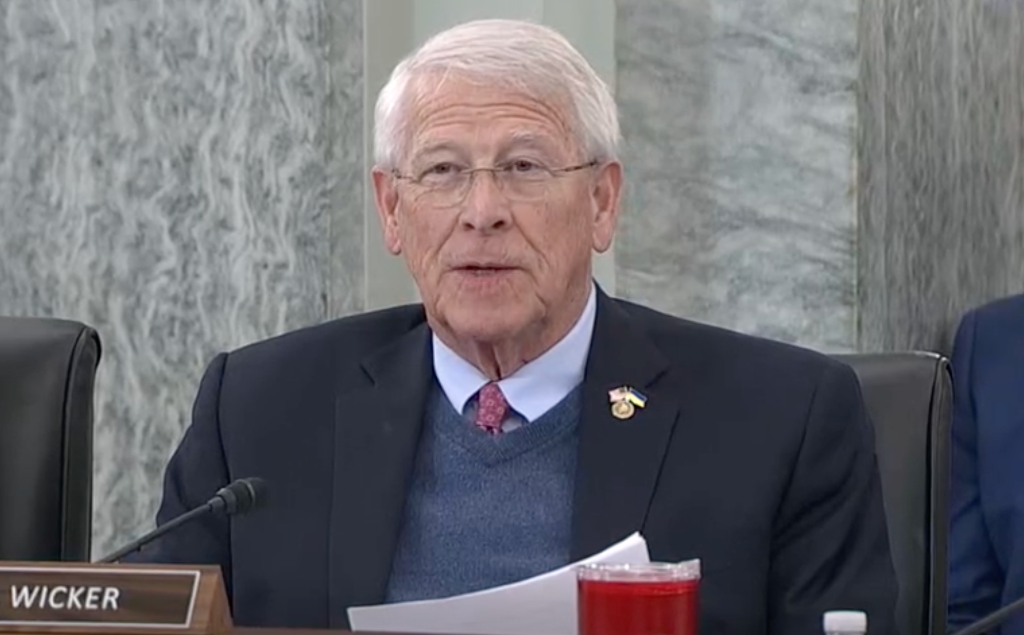Senators Look for Way Forward on Spectrum Impasse
Lawmakers are looking to include FCC spectrum auction authority in upcoming budget legislation.
Jake Neenan

WASHINGTON, Feb. 19, 2025 – Lawmakers on both sides of the debate over how to reauthorize the Federal Communications Commission’s ability to auction off spectrum appeared dug into their positions as they sought some middle ground at a Senate hearing Wednesday.
Senate Commerce Committee Chairman Ted Cruz, R-Texas, reiterated he was looking to include reauthorization in a budget reconciliation bill this year.
Cruz and other lawmakers have pushed for that reauthorization coming with strings attached – a mandate to auction off a certain quantity of airwaves. That’s a position supported by the 5G carriers, who are eager for more spectrum, but fiercely opposed by the Defense Department and allied lawmakers, who see it as all but a mandate for the military to uproot essential systems.
“Look, I am more than open to compromise on what the aggregate pipeline target number should be, but zero is objectively unreasonable,” Cruz said. He admonished “bureaucrats in the Pentagon” who he said insisted on retaining control of spectrum.
Armed Services Committee Chairman Roger Wicker, R-Miss., was skeptical.
“I’ll tell you when we get the military in a SCIF – and I’m not giving away any secrets – they say ‘It’s just absolutely impossible, we can’t give an inch, and anything the chairman might advocate would be detrimental to national security,’” he said. SCIF is short for sensitive compartmented information facility, secured rooms the government uses for classified briefings.
Wicker asked witnesses about potential solutions, though. He asked about the feasibility of compression – using narrower slices of bandwidth – and interference notification systems. The latter could be used by government incumbents to coordinate spectrum use with commercial users rather than vacating airwaves, said Bryan Clark, director of the Center for Defense Concepts and Technology at the Hudson Institute.
“The technology is certainly viable,” Clark said. “The challenge would be getting it implemented into Defense systems that are, in some cases, multiple generations old.”
Sen. Deb Fischer, R-Neb., also on the Armed Services Committee, said the addition of a mandated pipeline was estimated by the Congressional Budget Office to raise “between $10-15 billion in a ten-year window,” but echoed DoD fears of a decades-long process to move existing systems to new bands.
Lawmakers have said the reauthorization itself, before the pipeline, was estimated to bring in something around $70 billion. The final number will be important, as it would be used as one of many pay-for items to offset tax cuts in the reconciliation bill. The reconciliation process allows lawmakers to pass budget-related legislation with a slimmer majority in the Senate.
Multiple lawmakers, Sens. Andy Kim, D-N.J, and John Curtis, R-Utah, suggested a classified briefing for the Commerce Committee to get a better handle on DoD concerns.
The government is studying the lower 3 GigaHertz band, the Defense spectrum especially eyed by mobile carriers, and the 7/8 GHz band as part of a Biden administration initiative. Those studies, intended to determine if and how the spectrum might be made available for commercial users, are set to be completed in October 2026. Defense engineers had previously found in a 2024 report that the lower 3 GHz band couldn’t be vacated or shared in the near future.
The details
Clark explained some of DoD’s mid-band spectrum was essential for missile defenses. The lower 3GHz is good for precisely tracking missiles as they fly through the air, and 8-12 GHz is used for identifying which objects might be missiles that need shooting down.
“So if we were to relocate out of those parts of the spectrum, you lose the physics that allows those sensors to work effectively,” he said. “That’s why sharing might be an effective alternative. Relocating them entirely might not be feasible because of the physics.”
CTIA, the 5G industry group, has sought to emphasize recently that it’s not looking for the Defense Department to clear the entirety of the lower 3 GHz band; DoD has claimed it would cost hundreds of billions and take decades to do so. Tom Power, former SVP and general counsel for the group, said at a FCBA webinar last week the group would be happy to somehow share the 3.3-3.45 GHz portion with the military.
Indeed, Cruz sought to dispel the idea that allowing full-powered commercial users on currently federal airwaves would necessarily mean the incumbent systems had to be moved. Full-powered use – which Cruz wants to open a minimum number of megahertz for – is ideal for mobile coverage, but opponents say it makes coexisting harder.
He floated geographic carve outs as a way to allow commercial users in without moving too many military systems.
“The challenge,” Clark said, would again “be implementation. Depending on how much your target is, it may prove difficult to be able to work out an arrangement so that the commercial and military users can both employ that spectrum.”
He added: “The auction may not be attractive from the commercial company’s perspective because the geographic patchwork they end up with, or the spectrum sharing requirements, are going to be such that it makes it too expansive for them to pursue.”











Member discussion